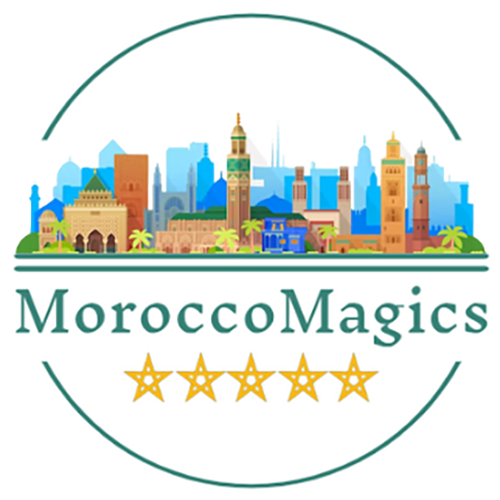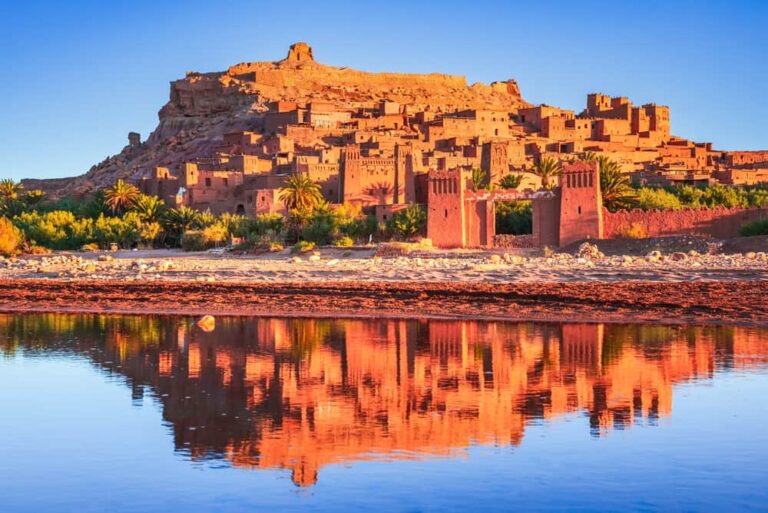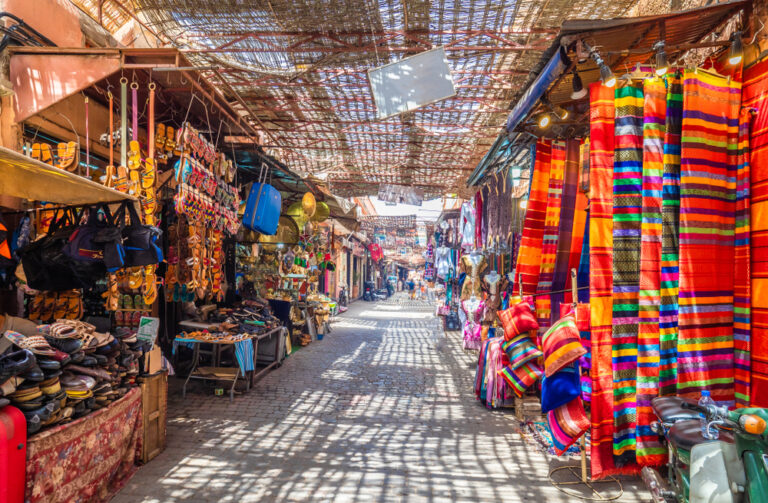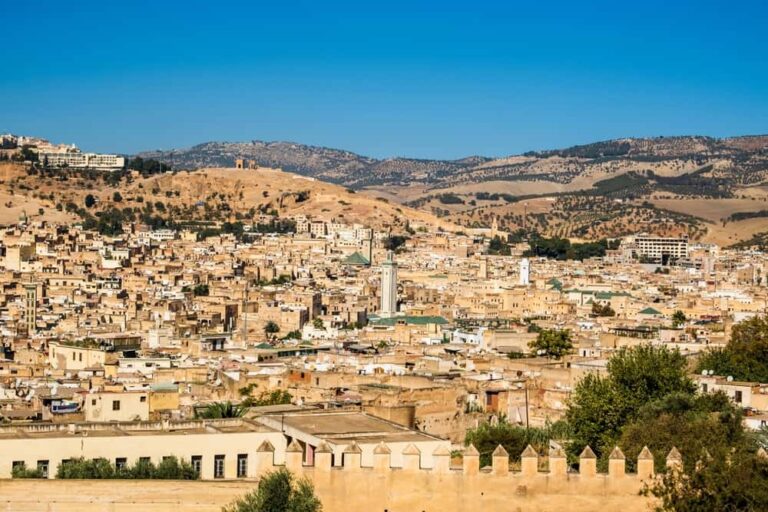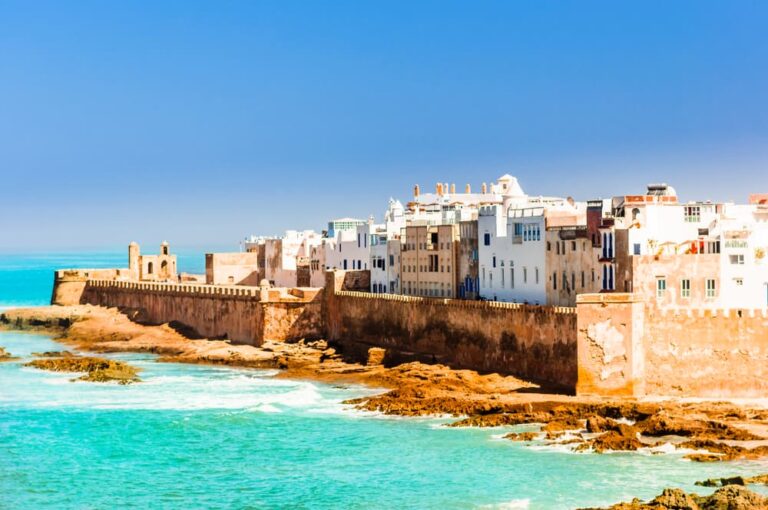Atlas Mountains
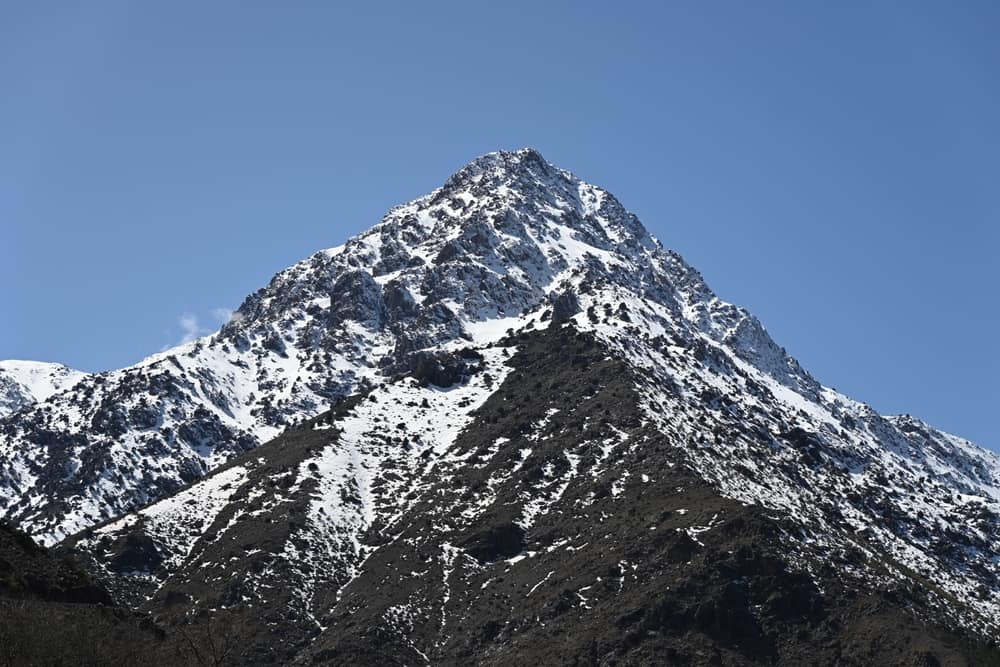
The Atlas Mountains are a vast mountain range in North Africa. They stretch across Morocco, Algeria, and Tunisia. In Morocco, they form a majestic backbone, shaping the land with towering peaks and deep valleys.
These mountains are divided into three main parts: the High Atlas, the Middle Atlas, and the Anti-Atlas. The High Atlas is home to Mount Toubkal, the tallest peak in North Africa. The Middle Atlas features lush green valleys and cedar forests, while the Anti-Atlas offers rugged landscapes with ancient rocks.
Visiting the Atlas Mountains is a unique experience. You can explore breathtaking landscapes, meet the Berber people in villages like Aït Bouguemez and Imilchil, and enjoy exciting activities like hiking, mountain biking, and skiing. In the next part, we’ll help you plan your trip with practical tips and useful information.
Planning Your Trip: Practical Information

Planning your journey to the Atlas Mountains is exciting. The mountains are near cities like Marrakech, Fez, and Ouarzazate in Morocco. You can fly into these cities from many places around the world. From there, you can travel by bus, join a private tour, or rent a car to explore on your own.
Before you go, check if you need a visa to enter Morocco. Many visitors can stay for up to 90 days without a visa, but it’s important to make sure. Your passport should be valid for at least six months to avoid problems.
In Morocco, the money used is the Moroccan Dirham (MAD). People speak Arabic, Berber dialects, and French. Learning a few basic words can help you communicate. You can also use translation apps on your phone to make things easier.
Climate and Best Times to Visit
The Atlas Mountains have different weather during the year. In spring (March to May), the weather is mild, and flowers bloom in the valleys. Summer (June to August) brings hot days and cool nights, especially in higher places. Autumn (September to November) has pleasant temperatures and colorful landscapes during harvest time. In winter (December to February), the High Atlas Mountains get snow, and you can enjoy skiing.
The best time for trekking is in spring and autumn when the weather is just right. If you like skiing, visit Oukaïmeden Ski Resort in the winter months. To enjoy cultural festivals, check the dates and plan your trip around events like the Imilchil Marriage Festival.
Cultural Insights and Local Traditions
The Berber people, also known as Amazigh, are the original inhabitants of North Africa. Visiting villages like Aït Bouguemez and Imilchil lets you experience their rich culture and traditions. They are friendly and might invite you to share a cup of mint tea, a traditional drink.
Festivals are a big part of Berber life. The Imilchil Marriage Festival in September is a joyful event where young people meet to find a husband or wife. Another important celebration is Yennayer, the Amazigh New Year, which takes place in January and features special foods and customs.
The Berbers are known for their arts and crafts. In places like Tazenakht, they weave beautiful rugs with designs that tell stories. You can also enjoy traditional music and dance performances, which are lively and full of energy.
Best Places to Visit in the Atlas Mountains
The Atlas Mountains of Morocco are a magnificent range stretching over 2,500 kilometers, offering a diverse landscape of rugged peaks, lush valleys, and traditional Berber villages. This region is rich in natural beauty, cultural heritage, and adventure opportunities. For travelers seeking an unforgettable experience, here are some of the best places to visit in the Atlas Mountains.
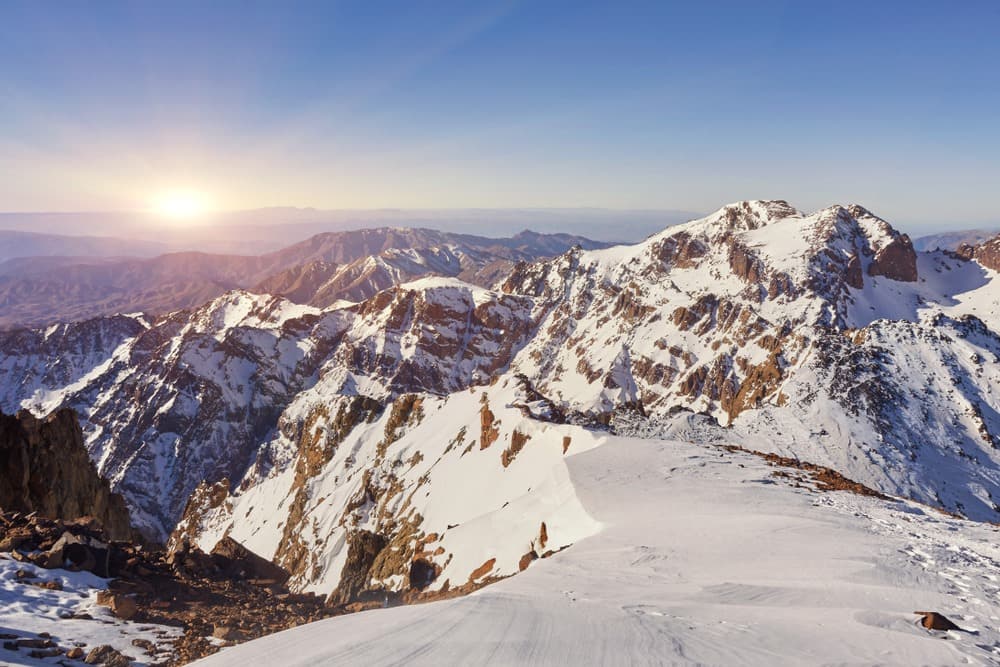
Mount Toubkal
Standing at 4,167 meters, Mount Toubkal is the highest peak in North Africa and a crown jewel of the Atlas Mountains. Located in the High Atlas range near the village of Imlil, it attracts trekkers and mountaineers from around the world. The ascent to the summit is challenging but rewarding, offering breathtaking panoramic views of the surrounding mountains and valleys. Along the way, hikers pass through traditional Berber villages like Aroumd and Sidi Chamharouch, providing a glimpse into the local culture. The best time to climb Mount Toubkal is from April to October when the weather conditions are favorable.
Aït Benhaddou
Aït Benhaddou is a UNESCO World Heritage Site and one of Morocco’s most iconic fortified villages, or ksars. This earthen clay village exemplifies traditional Moroccan architecture, situated along the former caravan route between the Sahara and Marrakech. With its towering mud-brick buildings and narrow alleys, Aït Benhaddou has served as a backdrop for numerous films and television shows, including Gladiator and Game of Thrones. Visitors can explore the ancient kasbahs, climb to the granary for panoramic views, and immerse themselves in the rich history of the region. The village is accessible via the Tizi n’Tichka Pass from Marrakech.
Imlil Village
Nestled in the High Atlas Mountains at an altitude of 1,740 meters, Imlil is a charming village that serves as the main base for treks to Mount Toubkal. Surrounded by terraced fields and walnut groves, Imlil offers a peaceful retreat from the hustle and bustle of city life. The village provides a range of accommodation options, including traditional guesthouses like Dar Imlil and the eco-friendly Kasbah du Toubkal. Visitors can enjoy hiking trails suitable for all levels, mule trekking, and cultural exchanges with the local Berber community. The weekly souk held every Saturday is an excellent opportunity to experience local life and purchase handcrafted goods.
Ourika Valley
Just a short drive south of Marrakech, the Ourika Valley is known for its stunning natural beauty and accessibility. Lush greenery, a flowing river, and a backdrop of the snow-capped Atlas Mountains characterize the valley. One of the main attractions is the Setti Fatma Waterfalls, a series of seven cascades that offer refreshing hikes and picturesque views. Along the way, visitors can explore Berber villages, visit aromatic gardens, and dine at riverside restaurants serving traditional Moroccan cuisine. The Ourika Valley is ideal for day trips or extended stays, offering a tranquil escape into nature.
Todra Gorge
Located on the eastern side of the High Atlas Mountains near the town of Tinghir, Todra Gorge is a spectacular canyon with towering limestone cliffs reaching up to 400 meters. The gorge has been carved out by the Todra River and provides a dramatic landscape that is popular among rock climbers and hikers. The narrow canyon offers a cool respite from the heat, and the surrounding palm groves add to the oasis-like atmosphere. Visitors can walk through the gorge, explore nearby Berber villages, and enjoy the breathtaking scenery. The best time to visit is during the spring and autumn months when the weather is mild.
Dades Valley
Known as the “Valley of a Thousand Kasbahs,” the Dades Valley stretches between the High Atlas and the Jebel Saghro range. This region is renowned for its dramatic rock formations, ancient kasbahs, and fertile fields. The winding Dades Gorge Road offers one of the most scenic drives in Morocco, featuring hairpin turns and panoramic vistas. Highlights include the unique “Monkey Fingers” rock formations and historic kasbahs like Kasbah Amridil. Travelers can enjoy hiking, photography, and cultural interactions with the local Amazigh (Berber) communities. The valley is particularly beautiful in the spring when the roses bloom.
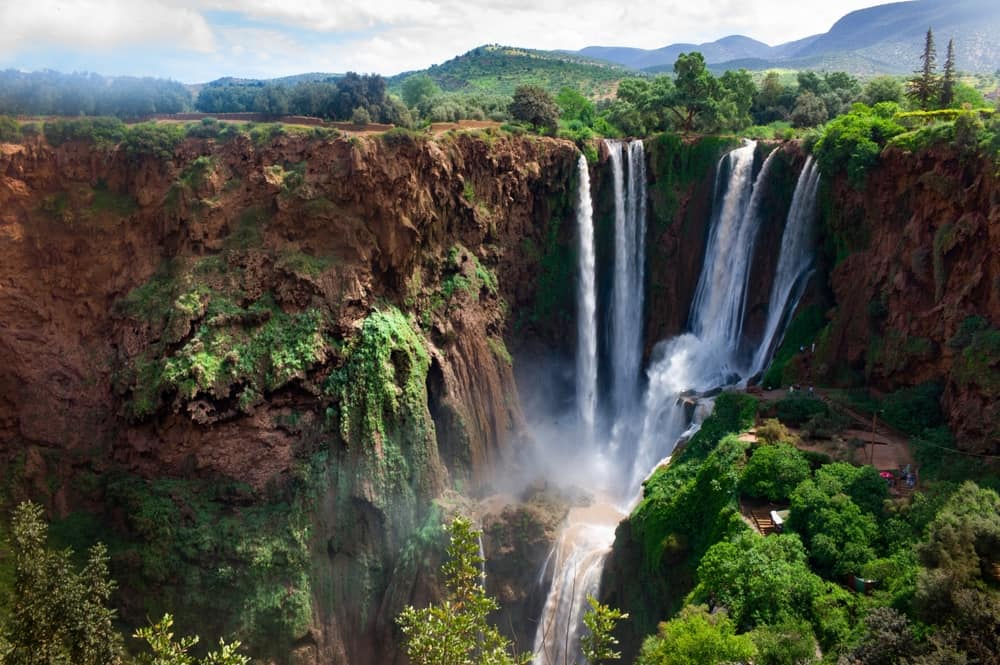
Ouzoud Waterfalls
Situated in the Middle Atlas Mountains near the town of Azilal, the Ouzoud Waterfalls are the highest in Morocco, plunging 110 meters into a canyon below. Surrounded by olive groves and red cliffs, the falls create a stunning natural spectacle, often adorned with rainbows. Visitors can hike to various viewpoints, take a boat ride to the base of the falls, and observe the playful Barbary macaques that inhabit the area. The surrounding area offers several small cafes and restaurants where travelers can relax and enjoy the scenery. Ouzoud is accessible as a day trip from Marrakech and is best visited in the spring when the water flow is at its peak.
Imilchil
Imilchil is a remote Berber village located high in the Atlas Mountains, famous for the annual Imilchil Marriage Festival. This unique cultural event, held in September, brings together members of local tribes for celebrations, matchmaking, and traditional ceremonies. The festival is a vibrant display of music, dance, and colorful attire, offering a rare glimpse into the customs of the Ait Haddidou people. Nearby, the twin lakes of Tislit and Isli, associated with local legends of star-crossed lovers, add to the area’s allure. Imilchil provides opportunities for cultural immersion, hiking, and exploration of the rugged mountainous landscape.
Ifrane
Nicknamed “Little Switzerland,” Ifrane is a town in the Middle Atlas Mountains known for its alpine-style architecture, clean streets, and cool climate. At an altitude of 1,665 meters, it offers a stark contrast to the typical Moroccan environment. Ifrane is a popular destination for skiing during the winter months, with the nearby Michlifen Ski Resort providing facilities for winter sports. In the warmer seasons, visitors can enjoy hiking, biking, and exploring the Ifrane National Park, home to cedar forests and the endangered Barbary macaque. The town’s stone lion statue is a notable landmark carved by a German soldier during World War II.
Tafraoute
Located in the heart of the Anti-Atlas Mountains, Tafraoute is a picturesque town surrounded by pink granite rocks and unique geological formations. The landscape is especially striking during sunset when the rocks take on a vibrant hue. Tafraoute is known for the Painted Rocks, a collection of boulders painted by Belgian artist Jean Vérame in 1984. The area is rich in Berber culture, with opportunities to visit traditional markets, purchase silver jewelry, and learn about local crafts. Outdoor enthusiasts can enjoy cycling, hiking, and rock climbing in the surrounding mountains.
Tin Mal Mosque
The Tin Mal Mosque, built in the 12th century by the Almohad dynasty, is one of the few mosques in Morocco open to non-Muslims. Located in the High Atlas Mountains along the road to the Tizi n’Test Pass, this architectural gem offers insight into Morocco’s religious and historical heritage. The mosque’s simple yet grand design exemplifies Almohad architecture. Visitors can explore the interior courtyards, admire the stonework, and learn about the significance of Tin Mal as the birthplace of the Almohad movement. The scenic surroundings add to the tranquility of the site.
Oukaïmeden Ski Resort
At an altitude of up to 3,273 meters, Oukaïmeden is Africa’s highest ski resort, situated in the High Atlas Mountains about 80 kilometers from Marrakech. The resort offers a unique opportunity to ski in Morocco, with runs suitable for beginners and experienced skiers alike. Equipment rentals are available on-site, and the area transforms into a hiking destination during the summer months. Nearby, visitors can discover ancient petroglyphs, providing a glimpse into prehistoric times. The panoramic views of the surrounding peaks make Oukaïmeden a worthwhile visit year-round.
Tizi n’Tichka Pass
The Tizi n’Tichka Pass is a high mountain pass connecting Marrakech to Ouarzazate, reaching an elevation of 2,260 meters. The winding road offers some of the most spectacular views in Morocco, traversing the High Atlas Mountains with dramatic landscapes and steep valleys. Along the route, travelers can stop at panoramic viewpoints, visit traditional Berber villages, and explore argan oil cooperatives run by local women. The pass is not only a gateway to the southern regions of Morocco but also an adventure in itself, showcasing the rugged beauty of the Atlas Mountains.
Aït Bouguemez Valley
Known as the “Happy Valley,” Aït Bouguemez is fertile in the Central High Atlas Mountains. Terraced fields, mud-brick houses, and a backdrop of towering peaks characterize the area. The valley offers a tranquil setting for hiking, mule trekking, and cultural experiences. Visitors can stay in local guesthouses, participate in community projects, and explore historical sites like the Sidi Moussa granary. The warm hospitality of the Amazigh people and the unspoiled natural environment make Aït Bouguemez a hidden gem in the Atlas Mountains.
Azrou
Azrou is a peaceful town located in the Middle Atlas Mountains, surrounded by cedar forests and known for its wildlife. The nearby Cedar Forest of Gouraud is home to the famous Gouraud Cedar tree and the Barbary macaques. Visitors can enjoy hiking through the forests, observing the monkeys in their natural habitat, and picnicking in scenic spots. The town itself offers a weekly market where traditional crafts such as wood carvings and rugs can be purchased. Azrou provides a serene environment for nature lovers and those seeking to experience traditional Moroccan culture.
Adventure and Outdoor Activities
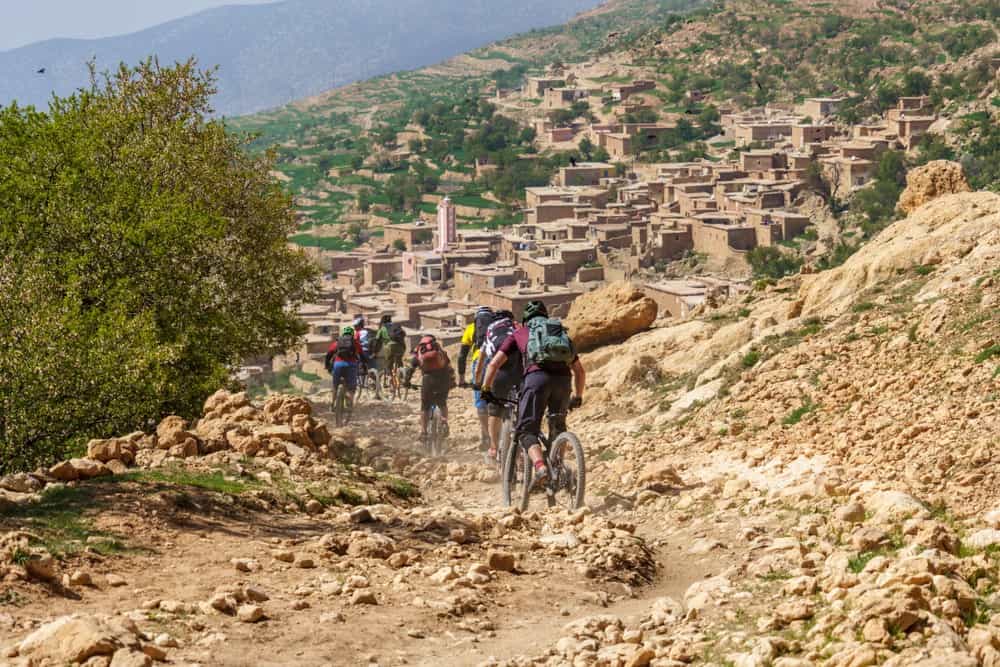
The Atlas Mountains are perfect for outdoor fun. You can hike to the top of Mount Toubkal, the highest peak in North Africa. This climb is challenging but offers amazing views. If you prefer quieter paths, the M’Goun Massif Trek lets you explore remote areas with stunning scenery.
For those who love biking, there are trails in the Ourika Valley and Ifrane National Park. These routes take you through beautiful landscapes. Rock climbers can test their skills at Todra Gorge, which has tall cliffs and routes for all levels. If you enjoy skiing, visit Oukaïmeden Ski Resort during winter. It has slopes for beginners and experts, and you can rent equipment there.
Nature and Wildlife Exploration
The Atlas Mountains are home to unique plants and animals. You can walk through cedar forests in the Middle Atlas and see rare plants like the Moroccan Atlas daisy. Keep an eye out for Barbary Macaques in Azrou. These playful monkeys live in the trees and might come close to say hello. Bird watchers can spot Lammergeier vultures and Golden eagles soaring in the sky.
Visiting Toubkal National Park and Ifrane National Park lets you explore nature while protecting it. Ifrane National Park is known as the “Little Switzerland” of Morocco because of its beauty.
Historical and Geographical Significance
The Atlas Mountains formed millions of years ago, creating interesting rocks and landscapes. Long ago, traders crossed these mountains from the Sahara Desert to Marrakech, carrying goods like gold, salt, and spices along ancient caravan routes.
You can visit historical places like the Kasbah of Aït Benhaddou, a fortress made of earth and clay. It is a UNESCO World Heritage site and has been used in many movies. Another important site is the Tin Mal Mosque, built in the 12th century, which holds great historical significance.
Local Cuisine and Dining Experiences
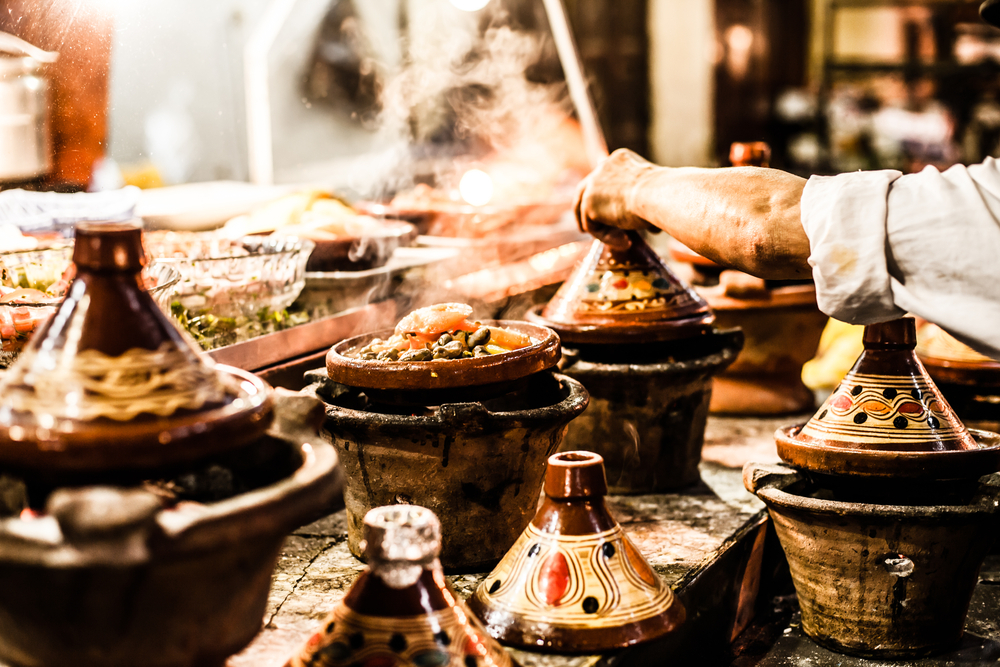
Moroccan food is delicious and full of flavors. You can try traditional Berber dishes like Tagine, a stew cooked in a special pot. Popular kinds include lamb with prunes or chicken with preserved lemons. Couscous is another staple food, often served with vegetables and meat.
Unique ingredients like Argan oil are produced in the Essaouira region. This oil is used in cooking and cosmetics. Saffron is harvested in Taliouine and adds special flavor to dishes.
For an authentic experience, you can eat with a Berber family and taste home-cooked meals. Visiting local markets, called souks, in towns like Taroudant, lets you buy fresh fruits, spices, and handmade crafts.
Accommodation Options
There are many places to stay in the Atlas Mountains. You can choose traditional riads and guesthouses like Dar Imlil in Imlil village, which offers cozy rooms with mountain views. Kasbah du Toubkal is an eco-friendly lodge high in the mountains, perfect for nature lovers.
If you prefer adventure, there are mountain refuges and campsites. Refuge Les Mouflons near Mount Toubkal is a good base for hikers. Remember to check the guidelines for camping and get any needed permits.
For a luxurious stay, Kasbah Tamadot near Asni offers beautiful gardens and comfortable rooms. You can relax with a traditional hammam (steam bath) and enjoy spa services.
Practical Travel Tips
Staying safe and prepared is important. To avoid altitude sickness, take it slow when climbing to high places and rest if you feel unwell. Check if you need any vaccinations before traveling. It’s best to drink bottled or purified water to stay healthy.
Pack comfortable walking shoes, sunscreen, a hat, and sunglasses. The weather can change, so bring layers of clothing. A small backpack is useful for day trips. Hiring a local guide can make your journey easier and more enjoyable. They know the area well and can help with language. Use maps or GPS devices, but be aware that your phone might not have service in some areas.
Sustainable and Responsible Tourism
Helping to protect the places you visit is important. Support local communities by buying handmade crafts directly from artisans and staying in local guesthouses. Follow the Leave No Trace principles by not leaving litter behind and respecting wildlife and plants. Show cultural sensitivity by dressing modestly and learning about local customs.
Unique Experiences Not to Miss

Make your trip special with these activities. Take a hot air balloon ride over the Atlas Mountains near Marrakech at sunrise to see breathtaking views. Visit the Ouzoud Waterfalls, the highest in Morocco, and maybe spot wild monkeys. Explore ancient kasbahs like Telouet Kasbah, once home to the Glaoui family, and Aït Benhaddou, famous for appearing in movies.
Do You Need a Guide for the Atlas Mountains?
Deciding whether to hire a guide is important. Local guides know the area well, can show you hidden places, and help with language. They keep you safe by understanding the terrain. If you choose to hire one, make sure they are certified. Ask for recommendations and check their credentials.
If you prefer to travel independently, plan carefully. Bring the necessary supplies and let someone know your plans. Be prepared for changing weather and have maps or GPS devices.
Top Tours and Itineraries
Choose tours that match your interests. A popular option is the Mount Toubkal 2-Day Trek, where you climb to the top and enjoy amazing views. The Aït Bouguemez Valley Hike takes you through the “Happy Valley” to meet local people.
For a scenic drive, take the Tizi n’Tichka Pass, a road with many twists and turns offering great sights. Cultural immersion tours allow you to stay with local families or volunteer in community projects.
The Best Time to Travel to the Atlas Mountains
Picking the right time makes your trip better. Avoid very hot or very cold times if you prefer mild weather. Spring and autumn are usually pleasant. Check the festival calendar to join events like the Imilchil Marriage Festival. Traveling during off-peak times might be quieter and more peaceful, while peak seasons can have more activities but also more visitors.
Conclusion
Your journey to the Atlas Mountains will be full of wonder and adventure. From towering peaks to friendly villages, there’s so much to see and do. You’ll make memories that last a lifetime. By traveling respectfully, you help keep the mountains beautiful for everyone. Your actions make a difference. For more information, visit official tourism websites, check maps, and read guidebooks to plan your routes.
Frequently Asked Questions
Is it safe to travel to the Atlas Mountains?
Yes, the Atlas Mountains are generally safe. Always follow local advice and stay aware of your surroundings.
What is the difficulty level of treks in the Atlas Mountains?
There are trails for all levels, from easy walks to challenging climbs like Mount Toubkal.
How can I respect local customs and traditions?
Be polite, dress modestly, and show interest in learning about the culture.
